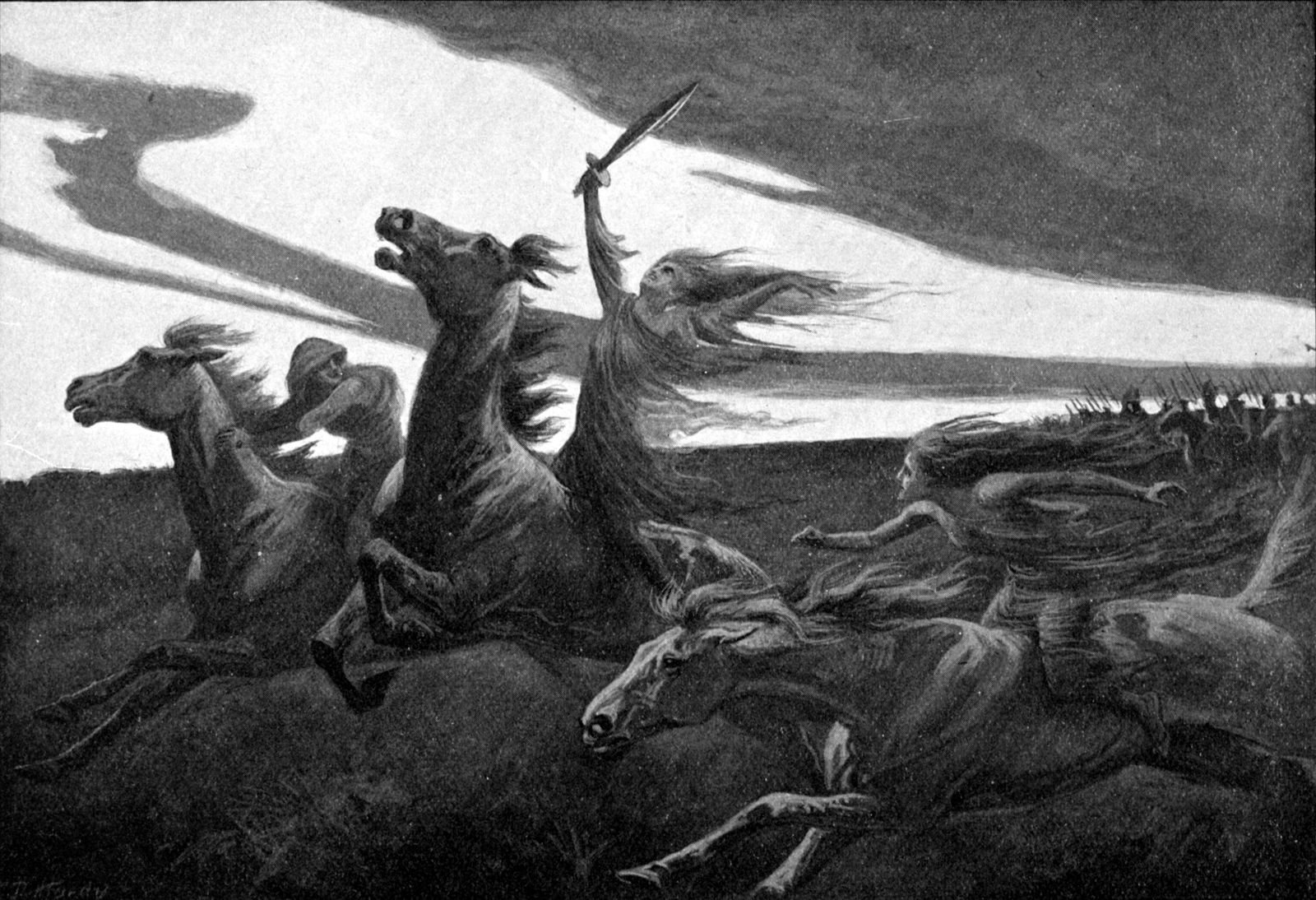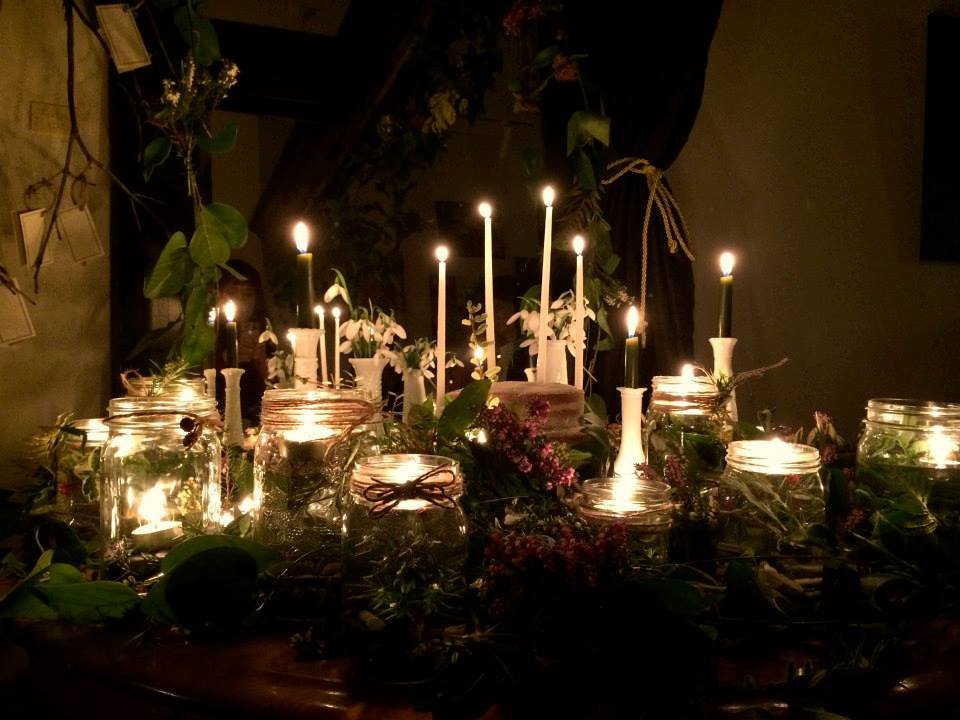Tea & Bourbon Barmbrack: A Recipe to Encourage the Returning Sun
Rich, moist Barmbrack
I’m relatively new to Imbolc. In fact, I’m not even 100% comfortable calling this ancient February festival by it’s Old Irish name, despite my Celtic heritage. A bit of Irish blood hardly makes me privy to old customs. The geography of my foremothers aside, I am drawn to this midwinter festival of light with it’s irresistible magic, food and lore.
For my Celtic and European ancestors, this time of year, between winter and spring, would have been a time for cautious optimism. Provisions would be running low, but as the days grew longer and the earth began to warm, animals would be mating or birthing (depending on your locale) and the fields would begin to thaw. This meant that larders would soon be filled again with milk, butter and eventually meat—that is, if everything went well. To hedge one’s bets in a world considerably harsher than our own, it would be wise to appeal to the goddesses who controlled such things, often with a festival. And you can imagine how welcome a celebration would be as the weight of a long cold winter began to shift.
Star of Heaven (detail), Edward Robert Hughes
Customs vary but there are similarities across agricultural communities. Most rites included offerings to the land or to the goddesses of the land to ensure fertile crops and families for the coming years. For the sake of this blog post, I’m going to focus on cake, but obviously there was a whole lot more to these festivals. Ceremonial cakes, usually round (to mimic the sun?) were made by women. The cakes were made with the women’s hopes and desires for the coming year along with the best of what remained in their cupboards. Often a cake was made for feasting and another or a portion of the family cake was left for a goddess or taken to the field to bless the crops-to-be.
“Cakes, in the ancient world, had ties with the annual cycle, and people used them as offerings to the gods and spirits who exercised their powers at particular times of the year…Agricultural peoples around the globe made offerings of cakes prepared from the grains and fruits that arose from the soil. The types of ingredients used to make these cakes contributed to their symbolism…The cake’s size and shape were equally symbolic of its ritual purpose…round cakes symbolized the sun or the moon…All of these cakes had definitive links to the myths the people embraced”
According to Bede’s De temporum ratione (The Reckoning of Time), the Anglo Saxon month of February was called Sol-monath, which can be translated to mean “cake month”… or “mud month”. As round cakes and loaves were made to mark the occasion regardless, I feel like we can make a solid case for “cake month”. We have the Anglo-Saxons and the Celts making round cakes in and around early February, or at least around the time that we now call February. Around the same time in Sweden, the Disting or dísaþing (“Disir-Assembly”) was held to honour female spirits known as the Disir. I couldn’t find much information about what happened during this festival, but I’m going to go ahead and assume there would be feasting and sacrifices to these female deities and to the land…and you know, probably cake.
The Dises (1909) Dorothy Hardy
So, we know the ancients made cakes for feast days throughout the seasons. We’re still trotting out ceremonial cakes, though today’s edible oil “ice-cream” monstrosities and $800 wedding cakes are a bit of a departure from the magical, symbolic rounds of yore. We can do better.
Right, so now that we’ve established the cake thing, there are many other beautiful rites for this loveliest of cross-quarter holidays that I won’t go too far into here. I usually host an Imbolc celebration and try to incorporate the traditions that strike us as beautiful and meaningful. Generally, we have a lot of candles (like, a lot) a fire and a feast featuring many gorgeous ceremonial dishes like ewe’s milk hung yogurt cheeses, herbal butters, milk punch (note the dairy theme: milk = purification), braided seed breads and of course, cakes! We also weave Brigid’s crosses/sun wheels using local greenery and set intentions for the coming spring. It’s all so beautiful and very much appreciated as we wait for spring.
Imbolc altar with handmade lanterns and…cake! Albeit, not barmbrack
And here is where I finally get to the barmbrack AKA barm brack, barnbreak, bairín breac/ bairínbreac, or bara brith (Welsh). No matter how I mispronounce any of these names, they all mean a yeasted or fermented “speckled bread”, as in bread speckled with dried fruit. I opted for an unleavened version. I fancy the idea of a more ancient cake, before they figured out how to easily extract yeast from brewing. I know if I were an ancient Celt, I certainly wouldn’t bother with wild yeast in a cold February kitchen. I suspect this isn’t a terribly historically accurate notion of mine. I should also add, that not all sources associate barmbrack with Imbolc, but I found enough to support serving this for a pre-spring festival. Also, I was out of yeast…
No matter, I wouldn’t change it for the world. This recipe is to die for (a good pun, if you know that barmbrack is a popular treat during Samhain). It’s rich and flavourful and really quite beautiful to behold. I made it for a previous Imbolc celebration and it was well-received. My fruit cake-hating six-year-old even liked it. Thank you, DoChara.com for the basic recipe. I’ve adapted the recipe slightly to include ancient/older grains, however you can easily use whole wheat or all purpose flour. When you’re making your barmbrack, put some intention into it. Think about your hopes for the coming year. Think about the friends and family you’re going to serve it to. And maybe keep a piece to crumble into your garden to bless your own fields.
Recipe Jump
Tea & Bourbon Barmbrack for Imbolc
Adapted from dochara.com
Keep in mind you need to soak the dried fruit overnight, so adjust your timing and expectations accordingly!
You’ll need a 7 or 8″ round tin – I doubled and made one 10″ round + a 6″ round
1 cup cold strong tea (I used Irish Breakfast because I’m all about congruity)
1/2 cup of bourbon or whisky of choice
1/2 cup organic soft brown sugar
1 tablespoon unsulfured molasses
1 fresh organic egg
3 cups mixed dried fruit (I used foraged wild blueberries, currants, mulberries and a few sultanas)
1.5 cups of organic red fife flour
1/2 cup of organic einkorn flour (if you can’t find einkorn, increase your red fife flour or whole wheat/all purpose to 2 cups)
1/2 teaspoon baking soda
1/2 teaspoon mixed allspice
1/2 teaspoon grated lemon peel
1/2 teaspoon grated orange peel
Put the tea/bourbon, sugar, citrus rind and dried fruit in a bowl. Stir well, then cover and leave to soak overnight.
The next day, preheat the oven to 350ºF and grease the tin with a little butter. Beat the egg and mix it thoroughly with the fruit & remaining liquid. Add the molasses. Sieve the flour, spices and baking soda together and stir well into the fruit mixture.
Turn the batter into the tin, place in the oven and bake for 90 minutes. Allow the brack to cool for about 20 minutes in the tin before turning it out to cool on a wire rack.
This loaf, if sealed up properly, keeps for a good 10 days. It also freezes like a dream!



